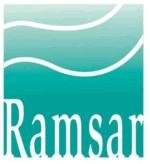Role of Government
 |
 |
 |
 |
 |
 |
 |
 |
 |
 |
|
The Ramsar Convention on Wetlands |
|
| Australia
is a signatory to the Ramsar Convention on Wetlands, an intergovernmental
treaty which provides the framework for national action and international
cooperation for the conservation and wise
use of wetlands and their resources.
Commitments under the Ramsar Convention: Contracting Parties commit themselves to:
In Australia the Ramsar Convention is implemented primarily under State and Territory legislation although all three levels of government - Federal, State/Territory and local governments - are involved to varying degrees in land and water management decisions.
The Federal and State and Territory Environment Ministers make up the Australia and New Zealand Environment and Conservation Council (ANZECC). ANZECC provides a national forum to discuss issues and formulate coordinated programs.
Wingecarribee and the Convention At the 6th Meeting of the Conference of the Contracting Parties Brisbane held in Australia in 1996 Recommendation 6.1: Conservation of Peatlands was passed. It recognised the value of peatlands and called on the contracting parties, including Australia, to develop, adopt and implement regionally based peatland management guidelines such as the IUCN Guidelines for the Sustainable Utilization and Integrated Management of Tropical Peatlands. It also recommended the development and adoption of national policies for peatland conservation.
One of the principle expectations of the Convention is that Contracting Parties will not only promote and protect sites nominated under the "List of Wetlands of International Importance", but they will also encourage and promote the "wise use" of all other wetlands within that country and surrounding regions. Wingecarribee Swamp has been assessed by New South Wales as a wetland of "national" importance and is listed in the publication A Directory of Important Wetlands in Australia (2nd ed) (1996). (Forbes, 1997) According to the Biodiversity Group of Environment Australia in 1997, Wingecarribee Swamp would have met The Criteria for Identifying Wetlands of International Importance. Source: Malcolm Forbes, Assistant Secretary Sustainable Water Branch, Biodiversity Group, Environment Australia, Mining Warden's Inquiry, 24 April 1997, Exhibit 99. The Biodiversity
Group, Ramsar in Australia, http://www.environment.gov.au/bg/environm/wetlands/ The official Ramsar Convention website, http://www.ramsar.org/. The Ramsar Info Pack, What is the Ramsar Convention on Wetlands?, The official Ramsar Convention website, 2000. Ramsar and Peatlands, http://www.ramsar.org/about_peat.htm, The official Ramsar Convention website, 9 June 1998. Additional Reference: A global action plan for the wise use and management of peatlands, 7th Meeting of the Conference of the Contracting Parties to the Convention on Wetlands (Ramsar, Iran, 1971), San Josˇ, Costa Rica, 10-18 May 1999
|
Home
| Story in Brief
| About Peatlands
| Value of Swamp
| History of the Swamp
Mining Impacts
| Role of Government
| Collapse of the Swamp
References | Glossary
| Site Map | Credits/Contacts
http://www.herinst.org/wingecarribee/

